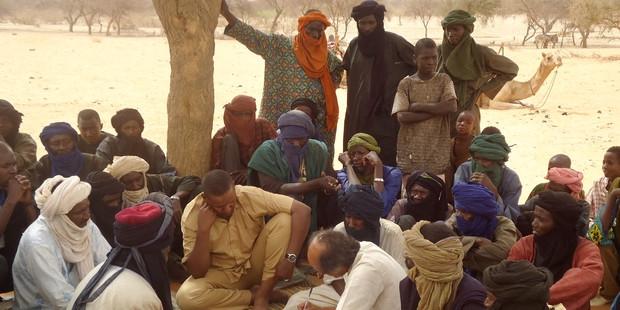The war in Sri Lanka has escalated this past weekend but one thing about the 26 year conflict has not changed; Tamil civilians bear the brunt of the attacks, injuries, and deaths. 70,000 civilians have been killed. The Red Cross reports that hundreds of civilians, including children, have been killed or wounded in fighting since last week.

Vanni area in Northern Sri Lanka, including Puthikudiyiruppu and many Internally Displaced People’s camps.
“The origins of the conflict arise from decades of the Sinhalese majority’s systematic discrimination against the Tamil minority, and its denial of the Tamils’ meaningful participation in the political process. The Sri Lankan army is almost exclusively Sinhalese. Successive Sinhalese-dominated governments have failed to effectively address these longstanding injustices.” Senator Patrick Leahy.
Civilians are sitting ducks, with 250,000 Tamil civilians trapped in the Vanni area conflict zone. The Sri Lankan government called a 48 hour safe passageway last Friday to allow civilians to escape; only 236 emerged from the conflict zone.
“People are on the move because they are looking for a safe place. But there is no safe place,” ICRC spokeswoman Carla Haddad
Those still trapped in the conflict zone and displaced from their homes are reliant on humanitarian aid that is waiting on the edge of the conflict zone.
The civilian toll rose with strikes on February 1st, 2nd, and 3rd on the hospital in Puthikudiyiruppu hitting the pediatric unit. Twelve civilians have been killed and 30 wounded due to artillery strikes over the past two days. The government forces and the Tamil Tiger rebels have denied responsibility for the assault.
Bits of news from inside the conflict zone come from the Red Cross and healthcare professionals; journalists are barred from entry. Sixteen journalists have been killed since 1992 and 3 imprisoned in Sri Lanka since the beginning of the conflict. Lasantha Wickrematunga, editor-in-chief of The Sunday Leader, predicted his own death:
“It is well known that I was on two occasions brutally assaulted, while on another my house was sprayed with machine-gun fire. Despite the government’s sanctimonious assurances, there was never a serious police inquiry into the perpetrators of these attacks, and the attackers were never apprehended,” he wrote in the column titled, “And Then They Came for Me.”
Civilians must be protected under international humanitarian law, be they women, children, journalists or healthcare workers. Humanitarian aid must reach civilians trapped in conflict zones and the international community should be allowed access to assess the damages.
“We are deeply troubled by comments by the Sri Lankan Government threatening to expel foreign diplomats, aid agencies, and journalists. Reporters have already experienced physical attacks and intimidation, including the latest brazen assassination of renowned journalist Lasantha Wickrematunga. Together, we urge the Government of Sri Lanka to protect all of its citizens and conduct swift, full, and credible investigations into attacks on journalists and other civilians.” Senator John Kerry and Senator Richard Luger.
Written by Ally Krupar, Edited by Zahir Janmohamed




